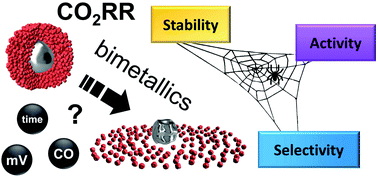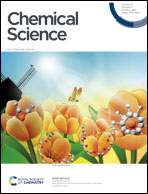Is Cu instability during the CO2 reduction reaction governed by the applied potential or the local CO concentration?†
Abstract
Cu-based catalysts have shown structural instability during the electrochemical CO2 reduction reaction (CO2RR). However, studies on monometallic Cu catalysts do not allow a nuanced differentiation between the contribution of the applied potential and the local concentration of CO as the reaction intermediate since both are inevitably linked. We first use bimetallic Ag-core/porous Cu-shell nanoparticles, which utilise nanoconfinement to generate high local CO concentrations at the Ag core at potentials at which the Cu shell is still inactive for the CO2RR. Using operando liquid cell TEM in combination with ex situ TEM, we can unequivocally confirm that the local CO concentration is the main source for the Cu instability. The local CO concentration is then modulated by replacing the Ag-core with a Pd-core which further confirms the role of high local CO concentrations. Product quantification during CO2RR reveals an inherent trade-off between stability, selectivity and activity in both systems.

- This article is part of the themed collection: Editor’s Choice – Jinlong Gong


 Please wait while we load your content...
Please wait while we load your content...